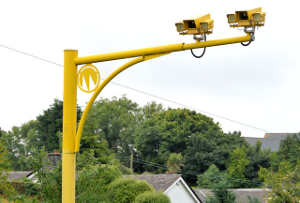Do Speed Cameras Have Tolerances?

Most drivers believe all speed cameras flash if you go above a certain speed, many might be surprised to learn this is not actually the case, most cameras track vehicles using infra-red technology, so no-flash does not necessarily mean a letter won’t be landing on your doormat any time soon.
Everyone knows speed limits are not actual targets and cameras are placed to improve road safety. Fines and penalty points will always have an impact on either your private, or motor trade insurance policy premiums. It’s now been revealed that on our UK public highways some speed cameras have tolerances if drivers go a certain number of miles per hour (mph) over the limit before any action might follow, although, these tolerances in place can be reduced by the authorities at any time.
You should always carry out your own research, but in this article, we look at some of the things you might want to know about speed camera tolerances after reviewing a survey involving 45 police forces carried out by Auto Express, 25 of those forces asked shared their information with the survey.
Does an average speed camera have tolerances?
All speed cameras will allow a tolerance of some sort for accuracy, but roads with average speed cameras in place work differently to fixed and mobile speed cameras, these record your speed over several miles and not just over a short distance normally indicated by lines on the road.
Average speed cameras mean the speeds recorded are more accurate so do not need to have the same tolerance levels in place. It’s suggested they also improve road safety further as drivers don’t focus on their speedometer more than the road itself.
How many mph over the speed limit can you drive?
Motorists should stick to the speed limit for the safety of themselves and other road users. Many speed cameras have a tolerance of 10% +2 mph above the limit before it targets a vehicle, which theoretically means, a camera on a road with a 70mph limit won’t activate unless a vehicle whizzes by at 79mph or more.
It wasn’t announced, but the Metropolitan Police (MET) recently reduced their tolerances from 10% plus 3 mph to 10% plus 2 mph.
What about mobile speed units?
Mobile speed camera vans typically have a range of around 1-2 miles and the technology used does impact the overall range of the speed camera. If caught by one of these mobile units, you will receive a Notice of Intended Prosecution (NIP) within 14 days of the offence happening.

What happens if caught breaking the speed limit?
Tolerances are used at the discretion of the police, depending on the severity of the speeding offence, the police may implement any of the following punishments:
Penalty FinePoints on your licenceDriver speed awareness courseDriving ban if court action is taken
You will need to inform your private or motor trade insurance broker; or company if you receive a speeding ticket or conviction, this could be an expensive admission. Although penalty points are recorded on your licence by the DVLA for 4 years, most insurers will consider the drivers penalty points within their calculations for 5 years.
Now flagged as a risky driver, this will no doubt see your vehicle insurance premiums increase for a period. According to research carried out by Consumer Intelligence, as much as £50 can be added on to your annual insurance cost on average, motorway offences can escalate costs to an additional £100 per year, that adds up to quite a bit over half a decade!







